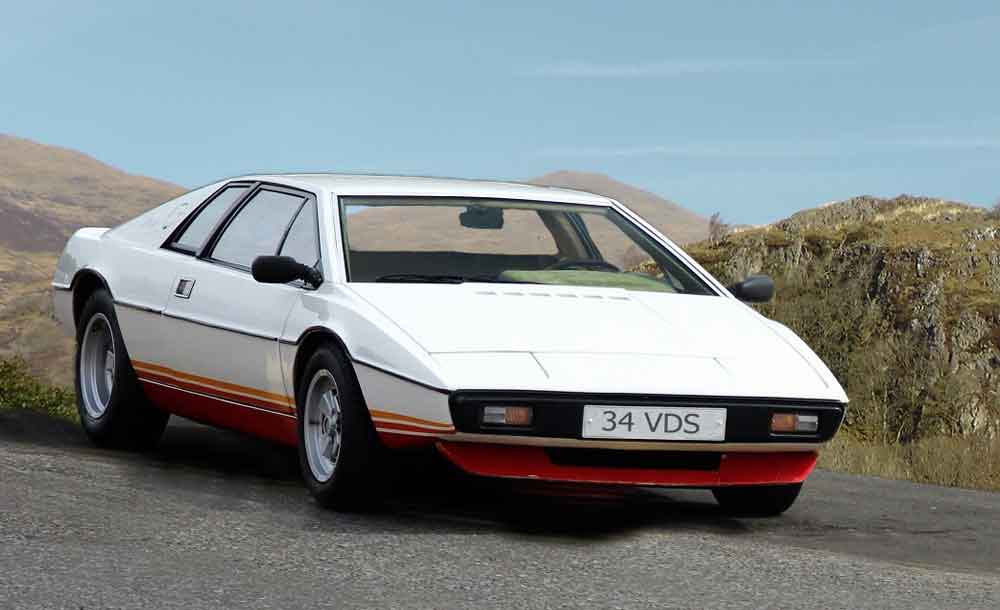The Lotus Story



Italian car designer Girgetto Giugiaro was fond of angular shapes, particularly the 'folded paper' design which later became very popular during the 1970s. One of the first cars to feature it was the Lotus Esprit but this car almost never saw the light of day.
Engineering director Tony Rudd needed to design a successor to the Europa and Giugario was invited to submit a plan. A quarter scale prototype was built but, ever the perfectionist, Colin Chapman wasn't impressed with the results of windtunnel tests. However Giugario pressed on with building a full-scale mockup and exhibited it At the Turin Motor Show in 1972. Chapman like the look of it, the project was re-started and the Esprit, with its distinctive wedge shape, was launched in 1976 to replace the Europa.
The car soon received massive publicity worldwide, thanks to Mr James Bond.
It nearly didn't happen. Cubby Broccoli, who was producing 'The Spy Who Loved Me', wanted a car which could do many wonderful things including convert into a submarine! Two street legal Esprits were delivered to the film location and were tried out by stuntmen on a simulated car chase but the cars gripped the road so well (which was of course what they were designed to do) that they were not considered exciting enough. This was soon rectified; a Lotus engineer called Roger Becker got behind the wheel and since he was much more familiar with the way the car handled he was able to throw it around with aplomb. Broccoli was so impressed that from then on Becker drove for nearly all of the car chases, much to the dismay of the stunt drivers!
Like the Europa, the Elite was mid-engined with a fibreglass body. Power came from a 2 litre four-cylinder engine producing 160 brake horsepower in European format but this had to be detuned somewhat for the USA market to meet their emission standards and power reduced to around 140 brake horsepower.
Despite its impeccable handling the car came into some criticism since it was looked upon as being underpowered; there was plenty at the top end but low-down torque was complained of. Was this fair? Lotus claimed a top speed of 138 mph and acceleration of 0-60 of 6.8 seconds but independent testers showed a 'mere' top speed of 133 mph and 0-60 of 8 seconds. Later versions had a larger engine, fuel injection, a V8 and even turbocharging. There was then power enough for the most demanding.
Eventually the Esprit went through four different incarnations; the final one was built in 2004 after a total production run of around 10,600.
Copyright © Scott Mason 2020 all rights reserved
Home | Privacy | Terms | Contact
Lotus Mark V1 | The Elite | The Elan | The Europa | The Esprit | The M100 | The Elise | Esprit V8 | The Exige | The Evora